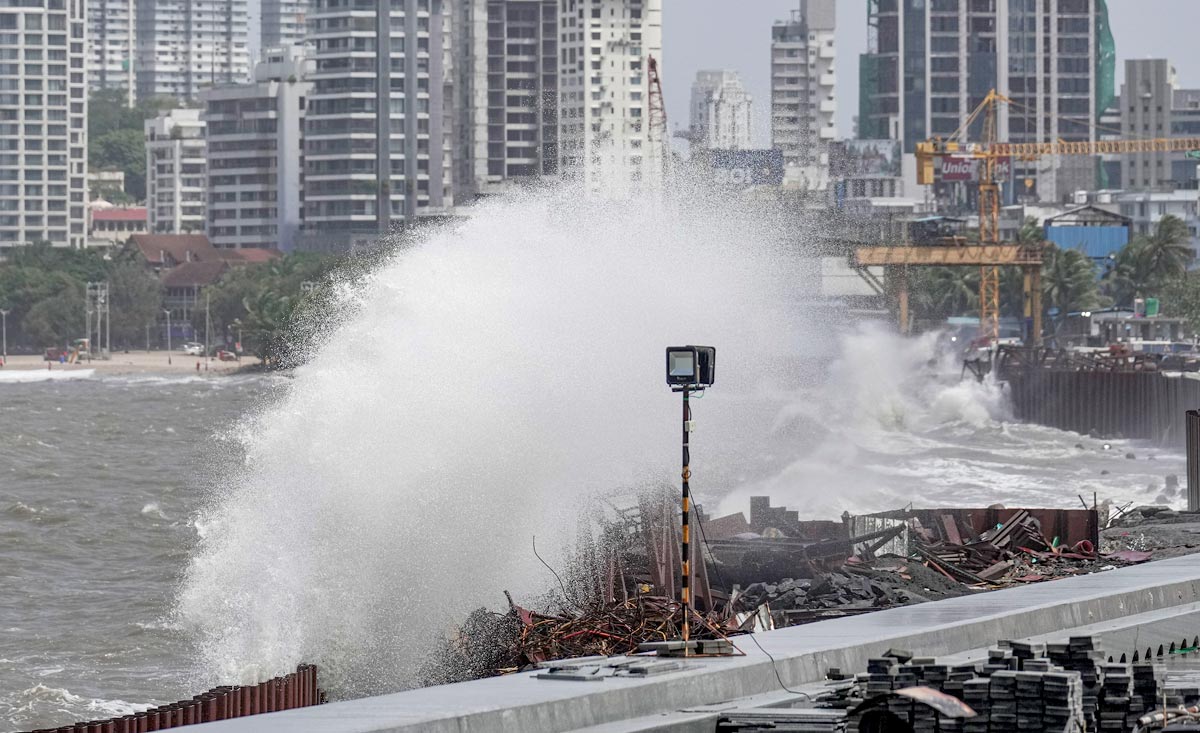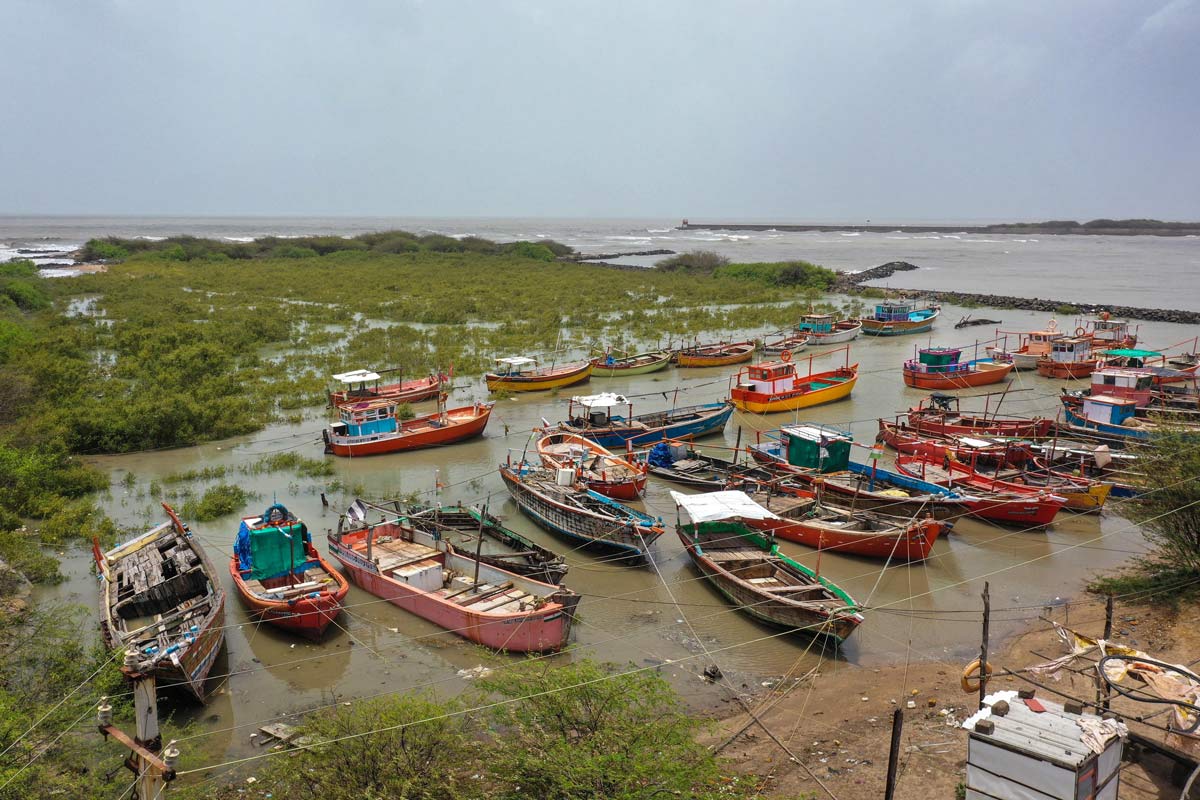Cyclone Biparjoy, packing maximum sustained winds with speeds of up to 145 kmph, is swirling towards the Gujarat coast and is expected to make landfall near Jakhau port in Kutch district.
With the India Meteorological Department (IMD) issuing a warning about the "extensive damaging potential" of the cyclone, authorities have already evacuated around 74,000 people living in vulnerable areas.
India, with a total coastal area of 7,516 km, is exposed to around 8 per cent of the world's tropical cyclones. Nearly 32 crore people in 9 coastal states -- Tamil Nadu, Andhra Pradesh, Odisha and West Bengal on the east coast and Kerala, Karnataka, Maharashtra, Goa and Gujarat on the west coast -- and some Union territories are vulnerable to the impact of cyclones.
Majority of the cyclones have their genesis over the Bay of Bengal and strike the east coast of India. However, recent research shows that the frequency, duration, and intensity of cyclones in the Arabian Sea have increased significantly over the last few decades.
On an average, five to six tropical cyclones form every year, of which two or three could be severe, government data shows.
Several major cyclones have hit various parts of India over the last 10 years. Here is a look at the notable among them.

Cyclone Tauktae (2021)
Classified as an extremely severe cyclone, Tauktae landed on the southern coast of Gujarat on May 17, 2021 while India was battling a fierce second wave of COVID-19. According to the US Joint Typhoon Warning Center, it packed maximum sustained winds of up to 185 kmph, making it the "strongest tropical cyclone" in at least two decades to impact the west coast of India.
The cyclone claimed over 100 lives, most of them in Gujarat, and caused destruction in Kerala, Karnataka, Goa, and Maharashtra as it brushed India's west coast.
Cyclone Amphan (2020)
Amphan, the first super cyclone over the Bay of Bengal after Odisha's super cyclone of 1999, made landfall on May 20, 2020, near the Sundarbans in West Bengal. According to the World Meteorological Organization (WMO), Amphan was the costliest tropical cyclone on record in the North Indian Ocean, with reported economic losses in India of approximately USD 14 billion and 129 casualties across India and Bangladesh.
Cyclone Fani (2019)
Fani struck the eastern coast of India on May 3, 2019, near Puri in Odisha at a wind speed of 175 kmph. The extremely severe cyclonic storm claimed 64 lives and caused substantial damage to infrastructure, including houses, power lines, agricultural fields, communication networks and water supply systems.
Cyclone Vardah (2016)
Vardah made landfall near Chennai on December 12, 2016. It was categorised as a very severe cyclonic storm. Vardah claimed 18 lives in Tamil Nadu and caused extensive damage to infrastructure, uprooted trees, and disrupted power supply in Chennai and neighbouring areas. Prompt warnings and preparedness measures facilitated the evacuation of people from vulnerable areas.
Cyclone Hudhud (2014)
It struck the coastal regions of Andhra Pradesh and Odisha on October 12, 2014. The cyclone claimed around 124 lives and caused significant damage to infrastructure, including buildings, roads, and the power grid. Visakhapatnam and nearby areas bore the major impact due to heavy rainfall, strong winds, storm surges, and flooding.
Cyclone Phailin (2013)
On October 12, 2013, Phailin hit the coast of Odisha near Gopalpur in Ganjam district with a wind speed of around 200 km per hour, affecting about 13.2 million people in 171 blocks in 18 districts of the state, and resulting in 44 human casualties.
The IMD's accurate early warning system and effective disaster preparedness measures helped in the evacuation of millions of people, minimizing the loss of life. Phailin caused extensive damage to infrastructure, agriculture, and livelihoods.










